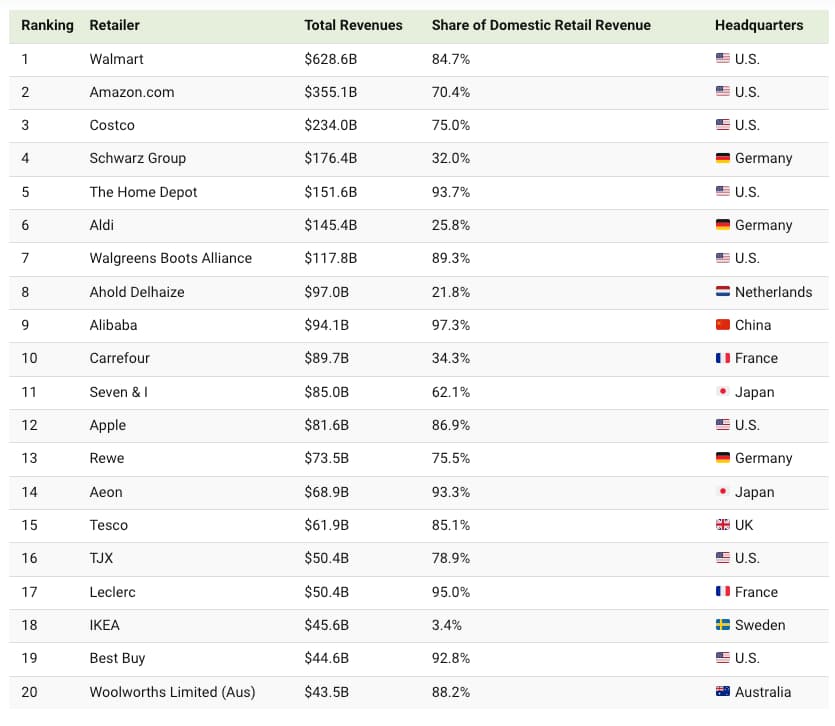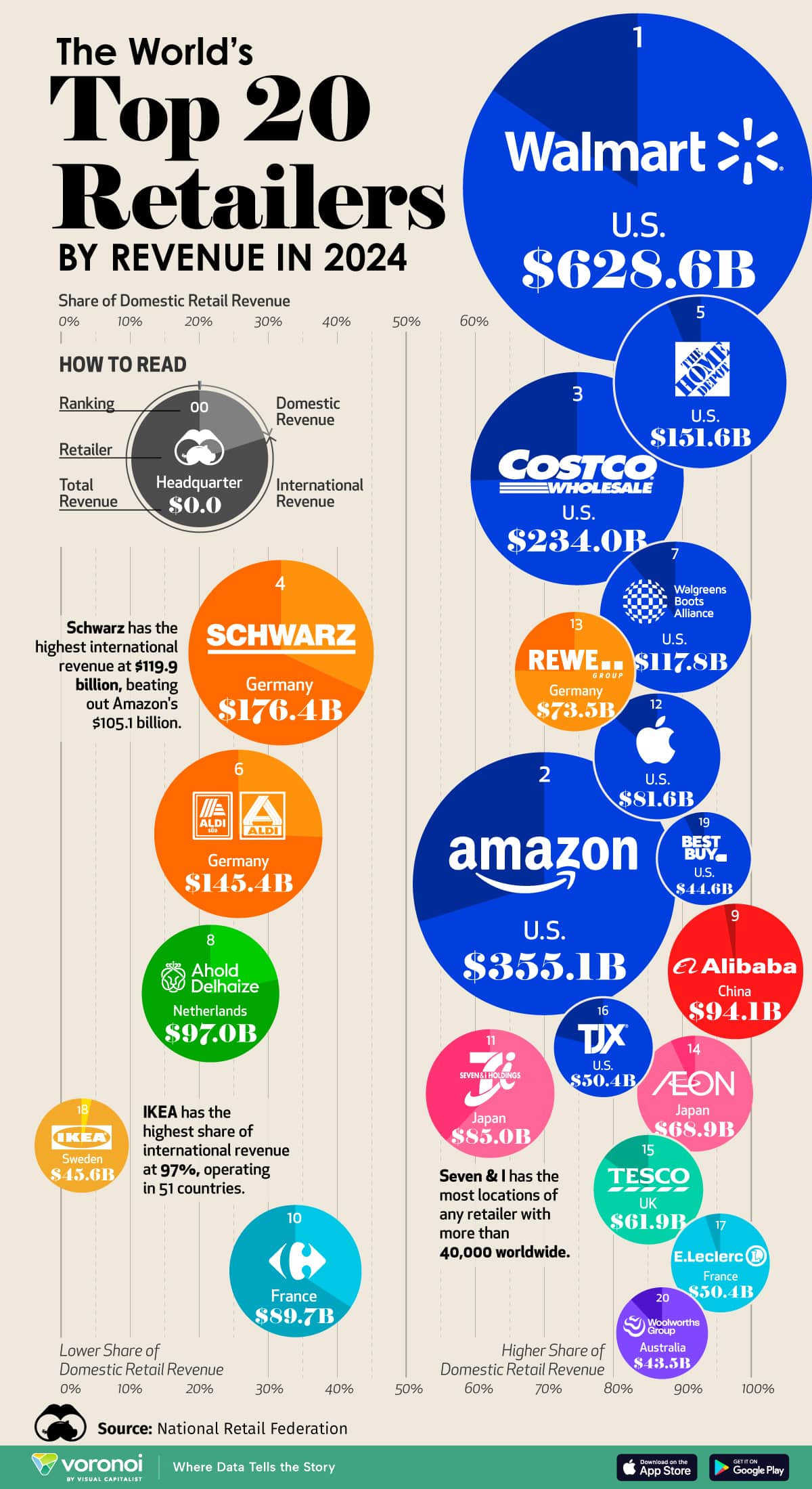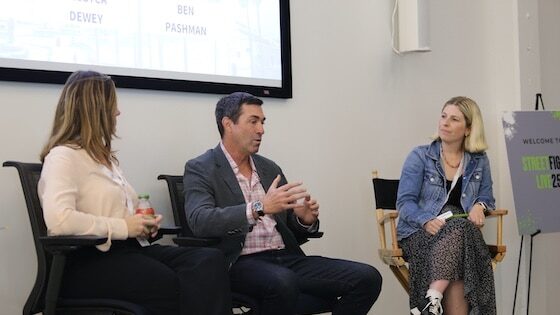If one were to ask you to name the top five retailers in the world by revenue, what would you guess? Walmart and Amazon probably lead most peoples’ lists, but then what? Visual Capitalist recently answered this question and its list crossed our desks, with some surprising and unsurprising results.
Getting right to the point, Walmart leads the top retailers list (one of the unsurprising parts), with $628.6 billion in revenue. That’s followed, again unsurprisingly, by Amazon. With $355.1 billion, most of its revenue comes from its core eCommerce business but it’s quickly expanding into physical retail and advertising.
Zeroing in on these top earners, along with third-place Costco, most of their revenue comes from the U.S. This is especially true for Walmart, with 85 percent of its revenue planted in domestic sales. About 90 percent of Americans are within 10 miles of a Walmart and it hosts 200 million shoppers per month.
Fast Fashion
Moving into international markets, a notable top retailer standout is Alibaba, which holds the ninth spot on the list. With $94.1 billion in annual revenue, its recent growth is driven by its Taobao and Tmall eCommerce platforms. And the biggest growth in these entities – 44 percent year-over-year – is international.
Here, we’re talking about the quickly emerging trend of fast fashion. Alibaba, like many other Chinese players, is all over it as growth is fueled by aggressive pricing and display advertising in markets like the U.S. In fact, PDD Holdings-owned Temu went as far as to buy a Superbowl ad spot this year.
Jumping over to Europe, Germany’s Schwarz Group ranked fourth on the top retailers list with $176.4 billion in annual revenue. This is one of the surprising results noted earlier, though the family-owned retailer (not unlike Walmart) operates in 30 countries where it serves 7.2 billion customers annually across 14,112 stores.
Speaking of German players, discount grocery giant Aldi ranked sixth on the list with $145.4 billion in annual revenue. Its growth is mostly due to international expansion, including a sizable presence in the U.S. Similar can be said for France’s Carrefour, which ranked tenth on the list with $89.7 billion in sales.

Mature Markets
One factor that jumps out from this list is that U.S. retailers do most of their business domestically, while international players have larger shares of revenue outside of their home countries. This isn’t too surprising, having a lot to do with population sizes (in Europe) and socioeconomic factors (in China).
Another takeaway – not necessarily in these rankings but between the lines – is revenue diversification. Fighting for an increasingly fixed pie and mature markets, many of the U.S. giants on the list are engaged in ongoing efforts to carve out new revenue streams. And the biggest category there is retail media.
When looking at the top two retailers – Walmart and Amazon – they also lead the list for retail media networks. Both see an opportunity to piggyback on their core businesses by monetizing engaged and high-intent shoppers with targeted ads. Don’t expect those investments to slow down anytime soon.
For more color, see Virtual Capitalist’s full infographic below and list-view above.





